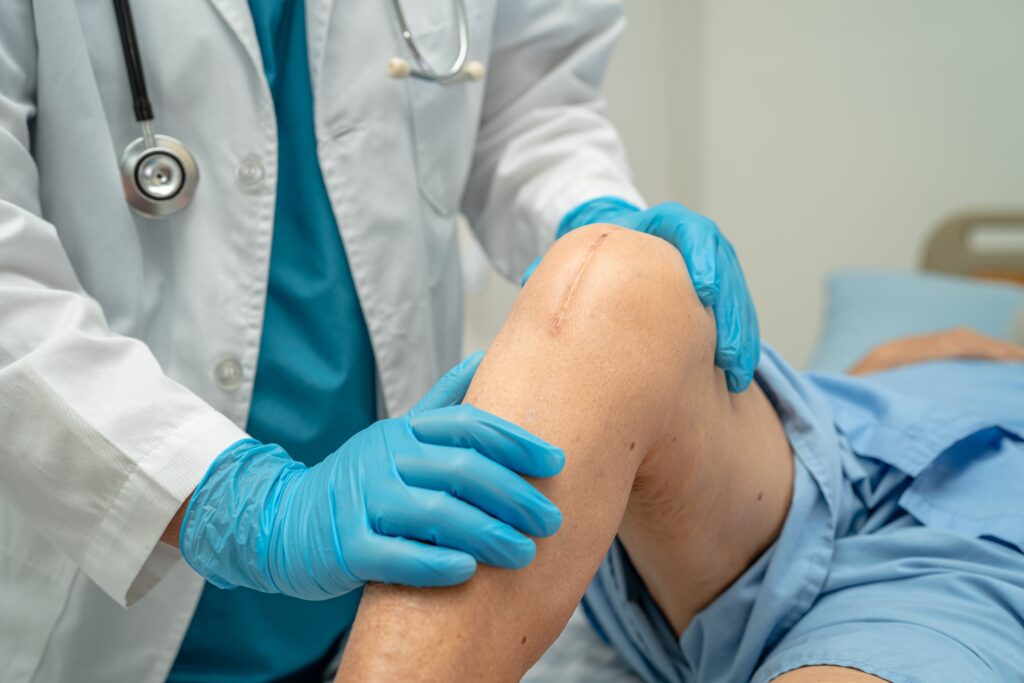
Unlocking the Potential of Revision Knee Replacement: How It Enhances Outcomes and Quality of Life
Knee replacement surgery is a major procedure that can help restore mobility, reduce pain, and improve the quality of life for many patients living with knee issues. But for some, the initial knee replacement surgery may not provide the desired results, and a follow-up procedure known as revision knee replacement may be necessary. In this blog post, we’ll explore what revision knee replacement surgery is, the potential benefits, the potential risks, and the long-term effects of this surgery.
Introduction to Revision Knee Replacement
Revision knee replacement surgery is a specialized procedure used to correct the problems caused by a failed or failing knee replacement. It is a complex procedure that requires a very experienced orthopaedic surgeon to perform. The goal of a revision knee replacement is to provide the patient with a better functioning knee and improved quality of life.
What is Revision Knee Replacement?
Revision knee replacement surgery is a complex procedure that involves replacing the original knee replacement components with a new knee replacement. It is a more involved procedure than the initial knee replacement surgery and requires special training and experience. The total knee replacement surgery requires a detailed evaluation of the original knee replacement, removal of the original components, and then replacement of the components with different components.
In some cases, the replacement components may be made of different materials or may have different shapes or sizes than the original knee replacement components. In other cases, the components may be the same as the original components but in different positions or configurations.
Benefits of Revision Knee Replacement
The primary benefit of the best knee replacement surgery is improved function and a better quality of life. Patients who undergo revision knee replacement surgery can expect to experience less pain and improved mobility. The new knee replacement components are designed to provide better stability and motion, giving the patient a more natural feeling knee.
In addition to improved function, revision knee replacement surgery can also reduce the risk of future complications. The new components are designed to be stronger and more durable, so they are less likely to fail in the future. This can help reduce the risk of infection, dislocation, and other complications associated with the initial knee replacement.
Potential Complications of Revision Knee Replacement
As with any major surgery, there are potential risks and complications associated with revision knee replacement surgery. The most common risks include infection, blood clots, and nerve damage. It is important to discuss the risks and potential benefits of the procedure with your surgeon before the surgery.
In some cases, the new components may not fit properly or may not work as expected. This can lead to further complications or even the need for a second revision knee replacement surgery. It is important to follow up with your surgeon regularly to ensure that the new knee replacement is functioning properly.
Revision Knee Replacement Surgery: Step by Step
Revision knee replacement surgery is a complex procedure that requires special training and experience from the best knee replacement doctor. The surgery begins with a detailed evaluation of the knee and the original knee replacement components. The surgeon will then remove the original knee replacement components and replace them with new components.
The new components are usually made from different materials and may have different shapes or sizes than the original components. The new components are placed in the knee and secured with screws, pins, or other devices. The surgery is completed by sewing the tissues and closing the incision.
Post-Operative Care After Revision Knee Replacement
After the surgery, the patient will be taken to the recovery room and closely monitored for any signs of infection or other complications. The patient will then be moved to a rehabilitation centre for physical therapy and other post-operative care. Physical therapy is an important part of recovery and helps the patient regain strength and mobility in the knee.
The patient may also need to use crutches, a cane, or a walker to support their weight and reduce the risk of further injury. Medications may also be prescribed to reduce pain and inflammation. After the initial recovery period is complete, the patient will be able to slowly return to their normal activities.
Recovery and Rehabilitation After Revision Knee Replacement
After the initial recovery period, the patient will need to begin a rehabilitation program to help regain strength and mobility in their knee. The rehabilitation program will typically include physical therapy, exercises, and other activities to improve the range of motion and strength in the knee.
The patient may also need to use assistive devices such as crutches or a cane to help support their weight and reduce the risk of further injury. The rehabilitation program should also include a program of activities that can help the patient return to their normal activities, such as walking, swimming, and biking.
The Long-Term Effects of Revision Knee Replacement
The long-term effects of revision knee replacement surgery can vary greatly from patient to patient. The benefits of the surgery can be significant, with many patients experiencing improved mobility, reduced pain, and improved quality of life. However, there are also potential risks and complications associated with the surgery, including infection, blood clots, and nerve damage.
It is important to follow up with your surgeon regularly to ensure that the new knee replacement is functioning properly and to reduce the risk of further complications. If any problems or complications arise, the surgeon can take steps to address them.
Resources for Patients Considering Revision Knee Replacement
If you are considering revision knee replacement surgery, there are several resources that can help you make an informed decision. Your doctor can provide information on the risks and benefits of the surgery and can refer you to an experienced orthopaedic surgeon.
In addition, there are several online resources that provide information on revision knee replacement surgery.
Conclusion
Revision knee replacement surgery is a major procedure that can help improve the function and quality of life for those living with knee issues. The surgery is complex and requires a very experienced orthopaedic surgeon, but the potential benefits can be significant. It is important to discuss the risks and potential benefits of the procedure with your surgeon before the surgery. If you are considering revision knee replacement surgery, there are a number of resources available to help you make an informed decision.
Revision knee replacement surgery can be a life-changing procedure, and with proper care and post-operative rehabilitation, patients can enjoy improved mobility and reduced pain for years to come.
